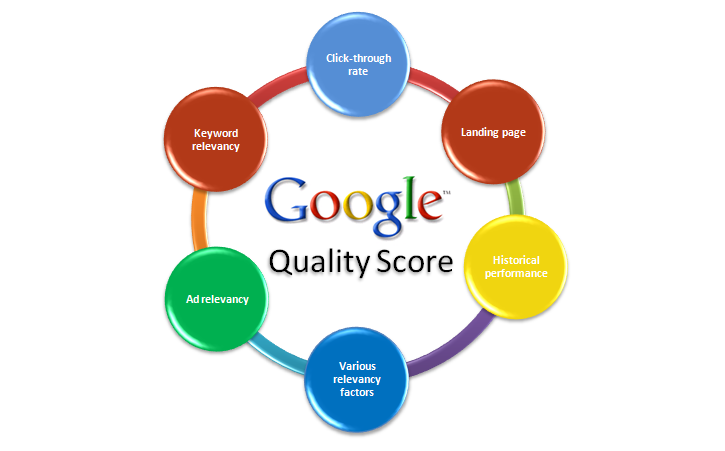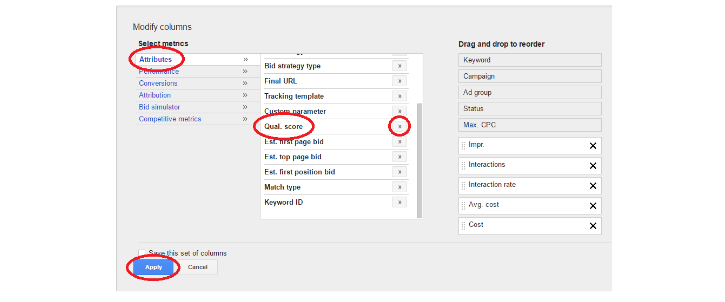
Take a minute and pretend you are running in an upcoming election for Mayor.There are many other qualified competitors running against you, and you have to find a way to manage your resources and beat them for that office. What do you do? Obviously, you have to do a lot of work. But above all, you try to speak to the people of your city in a way to which they can relate. The more the citizens agree with what you are saying, the higher your approval rating is going to be and the more traction you’ll receive. Your name gets heard more, you receive more sponsors, and overall your chance of sitting in that mayor’s seat becomes more plausible.
Your ad has to compete with other related ads and your ultimate goal is to win that top advertising spot on a search results page.
Now, replace “running for election” with “running an ad campaign”. When you create an ad in AdWords, it undergoes a similar process as a candidate running for election. Your ad has to compete with other related ads and your ultimate goal is to win that top advertising spot on a search results page. Google, in this analogy, is whose attention you are trying to seek. They hold the overall power that is going to dictate your “approval rating” or “quality score” based on how well it relates to their number one priority, the users. We're going to take some time today to explain the ins and outs of what a quality score is, and identify ways you can work to improve it!
What is a quality score?
Google defines quality score as, “an estimate of the quality of your ads, keywords, and landing pages.” At its core, quality score is about addressing what the user’s intentions are, and how relevant your site and ads are to those intentions. Google takes many things into consideration when assigning a quality score, such as keyword relevancy, ad copy relevancy, landing page relevancy, expected click-through rate, and your site's and ad's historical performance.

These factors – along with others – come together to form your quality score, a number ranging from 1-10 (10 being the highest) for each keyword in an ad group. Google assigns and discloses three distinct metrics in AdWords: expected CTR (click-through rate), landing page experience, and ad relevance. Each keyword will rank either “above average”, “average”, or “below average”. These average out to give you a keyword quality score.
If the page that a user goes to when they click on your ad isn’t relevant to what they are searching for or is determined to have a poor landing page experience, expect your quality score to take a hit.
Expected CTR is the likelihood that your ad will be clicked. This is an estimate that AdWords presents based on if your keyword matched exactly to the search term. To determine this, Google considers previous CTR data as well as ad positioning and ranking. If time has shown that your ad is highly relevant to searchers and its rank is high among its competitors, your expected CTR will most likely be high as well. If the page that a user goes to when they click on your ad isn’t relevant to what they are searching for or is determined to have a poor landing page experience, expect your quality score to take a hit. Ad relevance specifically looks at the relationship between your keyword and your ad. Google wants to make sure that if a user searches for a “blue dress”, they are shown ads that relate very strongly to that type of search.
Why does quality score matter?
Quality score is a magical measurement that could totally change your life, and by "life", of course we mean your ads. Quality score is shown to have a direct correlation not only to metrics like click-through rate and transactions, but can also effectively reduce your average cost-per-click (CPC) for keywords for which you have a high ranking. Advertisers who provide users with the most relevant and effective search results are rewarded with higher overall ad ranking and lower cost per click. Think about that, paying less for prime advertising real-estate!
How to improve your quality score
So, how do you get on Google’s good side and get those high quality scores? One way is to pay specific attention to ad relevance and do some intensive keyword research. Bid on more specific keywords and phrases, and avoid broad, general, vague or extraneous phrases, as they tend to not only be less relevant, but are often more competitive as well, which means click costs go through the roof!
Create each ad group to serve a specific function and focus on a smaller number of similar keywords and products.
Also, don’t be shy about making more ad groups. Instead of bulky ad groups that cover a broad range of keywords and products, create each ad group to serve a specific function and focus on a smaller number of similar keywords and products. After your ad runs for a while, also be sure to continue to add to your negative keyword list; you don’t want your ad to be getting attention in the wrong search queries!
Additionally, be sure to check out what search terms are generating any clicks. You're providing Google with a list of keywords, but you'll also show up for search terms that are closely related to ones you're already bidding on. If while looking at a search terms report, you see that a certain search is triggering your ad, try adding it to your keyword list to drive up ad relevance.
Another way to drive up that quality score is to optimize that PPC real-estate and take some care in creating your ad text. Use language that the reader can understand, and highlight why your site and products are more unique than your competition. Convince the user that your landing page has more to offer, and take advantage of ad extensions such as sitelinks. These allow you take up more space and organize by specific product categories or promotions.
It's also a great idea to think about user experience. Try to make all the navigation and processes on your site simple and intuitive. This starts by making sure that information in your ad matches with the landing page linked to it, as users will often click off of pages if they feel like there is any form of disconnect between an ad and a landing page. It is also becoming more and more important to make sure your landing pages are compatible on all devices, and to remove pop-ups and other interstitials that could divert the user from what you have to offer. We recently wrote a blog post about landing page experience, so you can feel free to check it out for more help, as well!
Ultimately, increasing your quality score means thinking like Google would: user first.
Ultimately, increasing your quality score means thinking like Google would: user first. Optimize for what is relevant to the user and your quality score is sure to follow. Additionally, Google doesn’t keep their methods on how to get your quality score up a secret. For more in depth practices to incorporate into your campaigns, check out these tips and video, straight from the source.
Where to find your quality score
So we've talked a lot about quality score and why it's important, but you might still be wondering where the heck you can go to even see the thing. In your AdWords account, there are a few ways to check out what your quality score is for your respective keywords. The easiest way to quickly check out how a keyword is performing is by clicking on “Campaigns” at the top of your AdWords account.

Next, click on “Keywords”.
From there, under the “Status” column, hold your cursor over the small white bubble and a window will pop up with all the information on what the quality score is and the score of components that construct it.

The other way to check out quality score is better used when you are wanting a larger grasp on a total diagnosis of what exactly is going on with your account’s keywords. Follow the same steps as the first way, but instead click on the bubble under “Status”, then click on the drop-down menu “Columns” and choose to “Modify columns”.

Next, choose “Attributes” as your metric, and click the arrow to add “Qual. score” as a column. Be sure to “Apply” your choice.

From there, you will see “Qual. score” added as a column for each keyword. This can help you see which keywords are performing better and which may be costing you more money for little to no impressions.
This has been a deep-dive into Quality Scores, but we've just scratched the surface when it comes to measuring the success of a PPC account. Here's a list of the 9 most important PPC metrics to help you stay on track.
We hope that this primer on quality score has been helpful! Have anything to add? Any questions? Let us know below!











